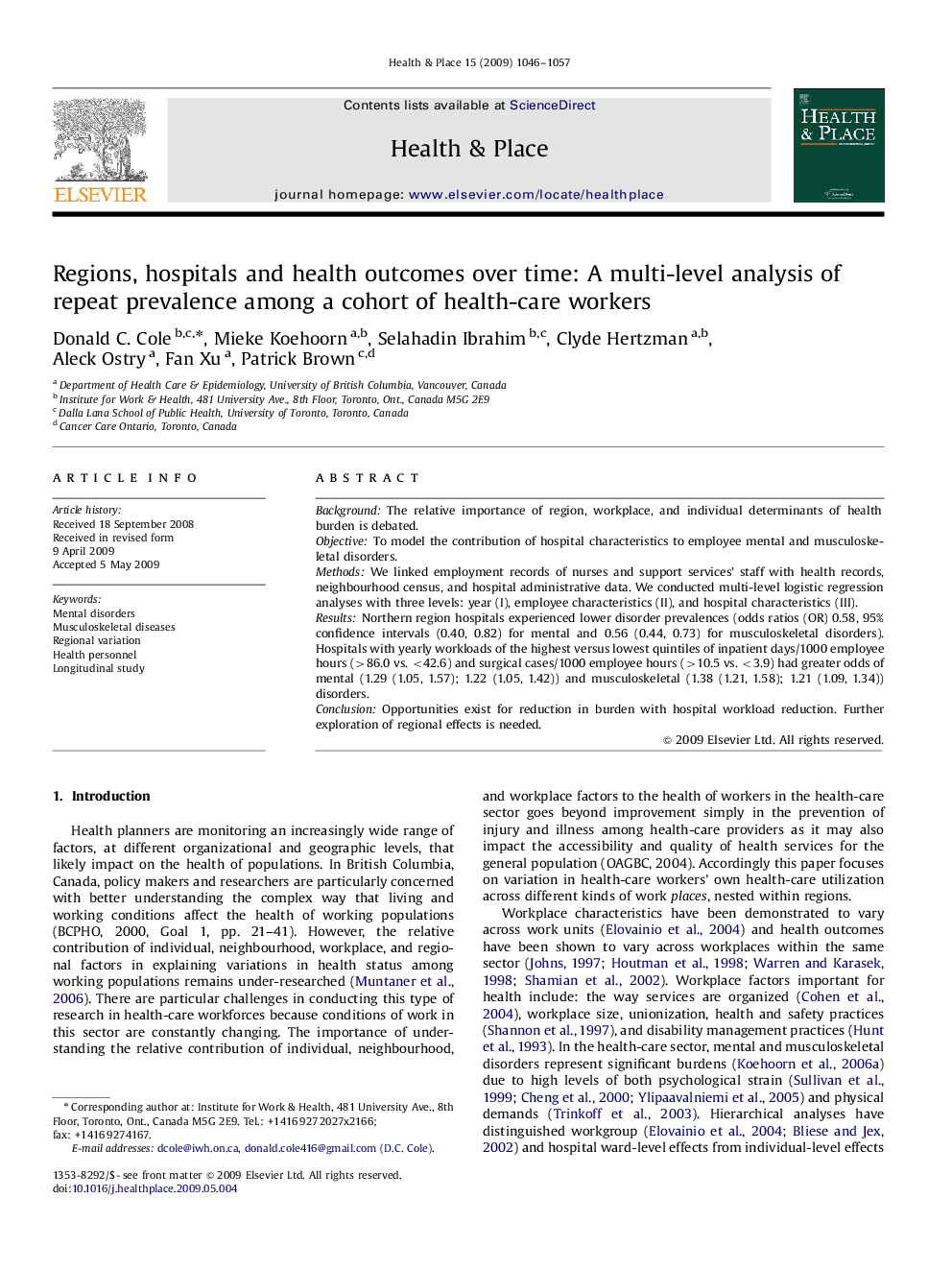| کد مقاله | کد نشریه | سال انتشار | مقاله انگلیسی | نسخه تمام متن |
|---|---|---|---|---|
| 1048731 | 945493 | 2009 | 12 صفحه PDF | دانلود رایگان |

BackgroundThe relative importance of region, workplace, and individual determinants of health burden is debated.ObjectiveTo model the contribution of hospital characteristics to employee mental and musculoskeletal disorders.MethodsWe linked employment records of nurses and support services’ staff with health records, neighbourhood census, and hospital administrative data. We conducted multi-level logistic regression analyses with three levels: year (I), employee characteristics (II), and hospital characteristics (III).ResultsNorthern region hospitals experienced lower disorder prevalences (odds ratios (OR) 0.58, 95% confidence intervals (0.40, 0.82) for mental and 0.56 (0.44, 0.73) for musculoskeletal disorders). Hospitals with yearly workloads of the highest versus lowest quintiles of inpatient days/1000 employee hours (>86.0 vs. <42.6) and surgical cases/1000 employee hours (>10.5 vs. <3.9) had greater odds of mental (1.29 (1.05, 1.57); 1.22 (1.05, 1.42)) and musculoskeletal (1.38 (1.21, 1.58); 1.21 (1.09, 1.34)) disorders.ConclusionOpportunities exist for reduction in burden with hospital workload reduction. Further exploration of regional effects is needed.
Journal: Health & Place - Volume 15, Issue 4, December 2009, Pages 1046–1057